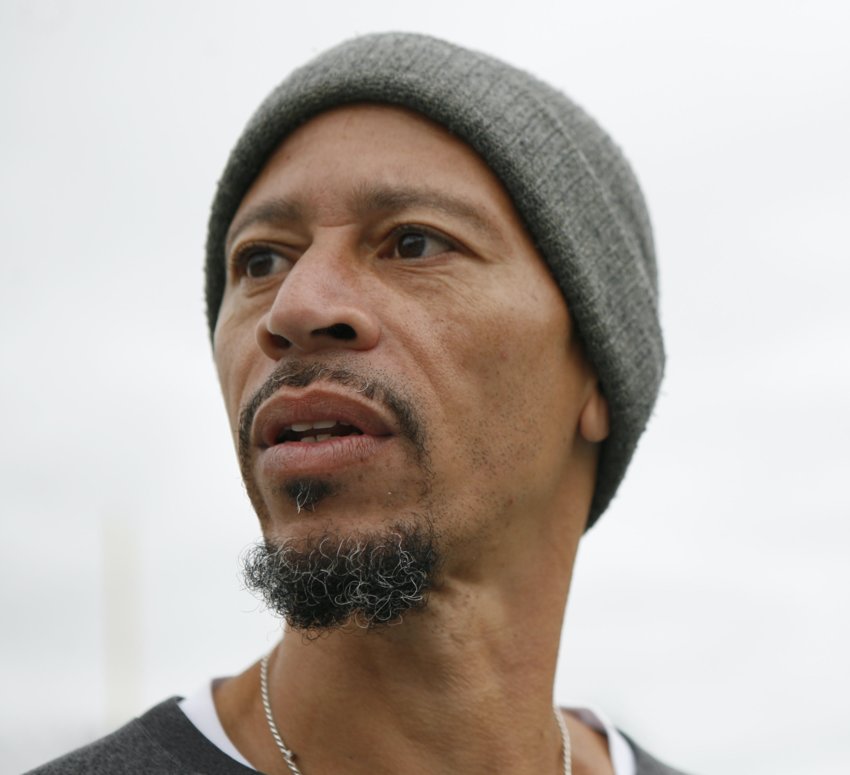Punishing or imprisoning fellow humans for moral or legal transgressions has been a seemingly necessary practice for thousands of years. Today, people are still incarcerated (and executed) for their crimes. Today’s prisons are much more institutionalized, with a burdensome bureaucracy that makes reporting on the system in the United States challenging and often frustrating for even the most respected publications and seasoned journalists. Approaching it like any other beat will invariably lead to dead ends, convoluted and unevenly applied policies and formidable barriers to uncovering the facts and revealing the truth of life inside.
The good news is that organizations are gathering the information and penetrating the confusing, dense veil of prison policies and prison life. They’re supporting prisoners who dare to write as incarcerated journalists and sharing tips with editors and journalists on the outside who want to report on prisons.
The backgrounder
Understanding the U.S. prison system requires the standard “backgrounder.” First, there is no “U.S. prison system” but a series of sub-systems: federal prisons and jails, local jails, state prisons, territorial prisons, Native American prisons, military prisons, juvenile and immigration detention facilities and psychiatric hospitals/institutions.
According to the Prison Policy Initiative (PPI) — a reliable data source for journalists, policymakers, incarcerated people and their families and grassroots advocates — 1.9 million people are being held in more than 6,000 correctional facilities. A better indication of how many people were in U.S. prisons during 2021 was a per capita incarceration rate of 664 per 100,000 residents, much more than all other countries — even those with more than double the U.S. murder rate.
Take a look at some prison population statistics:
“PPI data and publication also emphasize the often-overlooked millions of wives, significant others, children and other relatives whose lives are adversely affected when a family member is imprisoned, especially if they were the sole or primary source of household income,” Wanda Bertram, PPI’s communications strategist, said.
A different kind of beat
Journalists have two primary pathways to the prison system. The first is through a state’s Department of Corrections, county jail or other prison bureaucracies’ press office. Any information will likely be the “official” line. The second is by contacting prisoners directly, a process that can be quite difficult, depending on the particular prison system. Third sources include staff or line officers who may not be authorized to speak on the record and unions.
In an interview for this article, Alisa Roth, author of “Insane: America’s Criminal Treatment of Mental Illness” (Basic Books, 2018, updated 2020), said, “Not all prisons are open to reporters, but there are some with more liberal policies about allowing journalists to visit and interview prisoners.”
Roth added that journalists should be aware of the possibility of retribution against prisoners who provide “inside” information. They can lose privileges, such as having their phone calls or family visitation limited, while others can receive harsh discipline, such as solitary confinement.
The Reporters Committee for Freedom of the Press, which provides various legal support and resources to protect journalists’ rights, shared a few tips from an issue of “The News Media & The Law”:
Editors and journalists can also establish a collaborative, co-reporting relationship with prisoners who are already writing essays and well-researched articles.
“Relationship” is a keyword, according to “Scalawag” magazine’s “The Press in Prison” guidebook, published in November 2021. “Scalawag” primarily reports on important issues in southern U.S. states. The guidebook contains insights and practical tips for editors and journalists about how to work with incarcerated writers.
A relationship with an incarcerated journalist requires more than the standard support any publication provides its reporters. Editors must be willing to provide resources to pay the costs of phone calls and allocate staff to enter handwritten or typewritten content into their digital system. In-person visits are also essential to demonstrate the general support of incarcerated people and genuine interest in their writing. Editors and journalists will also have to communicate with incarcerated writers via several phone and similar services that profit from every text message, video call, email or conversation time. Accounts must be established with funds for each of these services. More prisons are allowing prisoners to have tablets, although they may limit or not allow access to the internet or email.
The team that wrote “The Press in Prison” guidebook also cautioned editors to avoid asking for sensational, even lurid, stories of prison life. Incarcerated journalists can tell their personal stories, but editors should help them pursue and write the same kind of investigative reporting they expect from their staff of journalists. It also provides incarcerated journalists with a more-rounded writing experience.
Having made an effort to communicate and build a relationship with a prison journalist and expend extra money and staff resources, many editors may think their publications deserve exclusive rights to the prisoner’s contribution. The guidebook, however, recommends making that material available to other news outlets to expose more of the public to prison system issues and generate additional reporting opportunities for incarcerated journalists.
A network of support
Stories and articles about prison life are not just the product of isolated writers. Prisoners in many facilities write and publish newspapers. San Quentin News is a well-established publication with a staff of more than a dozen prisoners, each with a role similar to any newspaper: editor-in-chief, editors, staff writers, circulation manager and photographers.
The San Quentin News distributes its monthly newspaper to the prison population at San Quentin and to the more than 30 prisons and four juvenile facilities throughout the California Department of Correction and Rehabilitation (CDCR) system. Of those 30,000 copies, many are sent to university and public libraries and hundreds of its donors in California and beyond. Foundation grants and private donations are its sole source of funding. New funding will allow the San Quentin News to increase its monthly output to 120,000, so every prisoner in the CDCR system can receive an issue.
The Prison Journalism Project (PJP) is one of many organizations supporting incarcerated journalists and newspapers like San Quentin News. The Project actively trains these journalists and publishes their stories to share their unique perspectives on criminal justice reform. PJP, in conjunction with the Society of Professional Journalists (SPJ), has started a national chapter of incarcerated and formerly incarcerated journalists. They must actively publish articles either on the PJP website or other publications or media outlets and follow SPJ’s Code of Ethics.
Empowerment Avenue is another supportive organization and outlet for incarcerated journalists and their writing. It is an excellent example of how those inside prisons and writers outside prisons can collaborate to publish those journalists’ stories and also generate income for them.

Emily Nonko, a freelance journalist, was invited to visit San Quentin prison, where she connected with journalists on the staff of San Quentin News, one of whom was Rahsaan Thomas. Together, they founded Empowerment Avenue in the summer of 2020.
“This was an experience that changed my life. Rahsaan had the inspiration to create a means for these and other incarcerated journalists’ writings to be published outside the prison,” Nonko said. “I recruited writers and editors to participate in the program. Within just two years, we’ve helped incarcerated writers publish more than 150 articles, and they’ve earned more than $30,000.”

With additional funding, Nonko expects she and Thomas will be able to expand the reach of Empowerment Avenue’s mission beyond volunteering and the criminal justice and left-wing publications where most of the articles of the incarcerated journalists’ stories appear.
“We certainly need more buy-in from legacy publications, but neither are we beholden to mainstream media,” Nonko said. “Many of these editors haven’t had much of a relationship with incarcerated people.
“I’ve discovered during my short time with Empowerment Avenue that many incarcerated writers have incredible writing talent but have had little or no outside media exposure,” Nonko added. “Part of our mission is to create a positive attitude among those inside who never thought they could write.”
According to Nonko, approximately 100 people attended the daylong event to launch and promote “The Press in Prison” guidebook. She was particularly impressed by how many people, especially younger journalists, are asking about the stories and articles of incarcerated journalists and how to collaborate with them. The interest generated from that event and the guidebook prompted Empowerment Avenue to create a listserv to help editors and journalists connect with incarcerated writers.
Telling the story of incarcerated women

Some stories of incarcerated women have a positive outcome. Keri Blakinger was a competitive figure skater as a teen but then descended into heroin addiction and was arrested and convicted of possession. After two years in prison, she resumed her college education. Despite the challenges of obtaining employment as a formerly incarcerated person, she landed a position with the Ithaca Times in New York. Her career advanced to the New York Daily News and then to the Houston Chronicle as a Hearst Fellowship recipient.
“My experience in prison wasn’t my motivation for eventually covering prisons and broader criminal justice issues. I was writing general assignment pieces at the Chronicle until my editor asked if I would be interested in also covering death row and some prisons on the side after the long-term death penalty reporter retired,” Blakinger said.
Today, she writes for The Marshall Project, “a nonpartisan, nonprofit news organization that seeks to create and sustain a sense of national urgency about the U.S. criminal justice system.” She is the first formerly incarcerated reporter at The Marshall Project.
When asked about her advice to news outlets about reporting on prisons, Blakinger said, “I’ve noticed many editors don’t understand the actual risks to prisoners who provide what seem to be relatively mundane quotes. Editors must be willing to quote those sources anonymously, which isn’t their usual practice, to reveal what occurs behind bars.”
Given the size of the U.S. prison population compared to the rest of the world, there are untapped sources of information about the many prison systems’ policies and practices that deserve the light of day. Individual prisoners’ stories and the talent and articles of many incarcerated journalists can enrich the coverage in all news outlets.
 Bob Sillick has held many senior positions and served a myriad of clients during his 47 years in marketing and advertising. He has been a freelance/contract content researcher, writer, editor and manager since 2010. He can be reached at bobsillick@gmail.com.
Bob Sillick has held many senior positions and served a myriad of clients during his 47 years in marketing and advertising. He has been a freelance/contract content researcher, writer, editor and manager since 2010. He can be reached at bobsillick@gmail.com.
Comments
No comments on this item Please log in to comment by clicking here